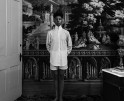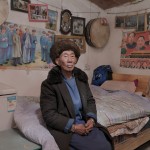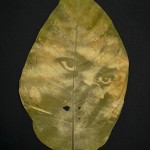The Center Awards: Curator’s Choice Award 1st Place: Rich Frishman
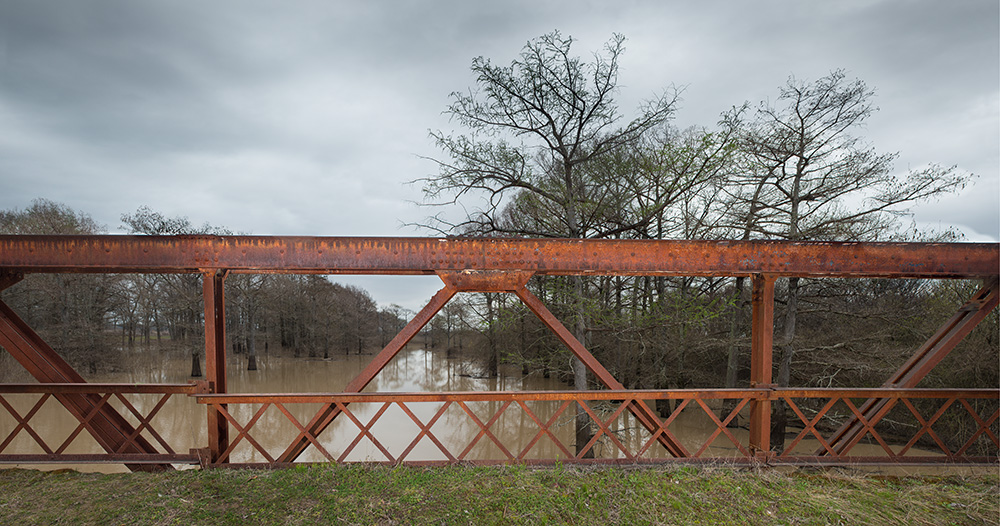
©Rich Frishman, : Black Bayou Bridge; Glendora, Mississippi 2018 In 1955, when Emmett Till was fourteen, his mother put him on a train from Chicago to spend the summer visiting his cousins in Money, Mississippi. She never saw him alive again. Her son was abducted and brutally murdered on August 28, 1955, after being falsely accused of interacting inappropriately with a white woman. His body was dumped into the muddy waters below Black Bayou bridge. The following month, Roy Bryant and his half-brother J.W. Milam faced trial for Till’s kidnapping and murder but were acquitted by the all-white jury after a five-day trial and a 67-minute deliberation. One juror said, “If we hadn’t stopped to drink pop, it wouldn’t have taken that long.” Only months later, in an interview with Look magazine in 1956, protected against double jeopardy, Bryant and Milam admitted to killing Emmett Till. In 2017 the alleged victim, Carolyn Bryant, admitted that Emmett was innocent.
Congratulations to Rich Frishman for his First Place win in CENTER’S Curator’s Choice Award for her project, Ghosts of Segregation. The Choice Awards recognize outstanding photographers working in all processes and subject matter. Images can be singular or part of a series. Winners receive admission to Review Santa Fe portfolio reviews and participation in a winner’s exhibition at Pictura Gallery in Bloomington, IN.
Juror Makeda Best, Curator of Photography, Harvard Art Museum shares her insights:
This year’s Curator’s Choice awards were notable for their unique pursuit of issues related to citizenship and belonging, gender, place, historical memory, ecology and sustainability. They looked closely at the immediate world around them and the people in it. In the lives of their mothers, or even in the interiors of cars, they illuminated a profound and mundane significance. Vivid, poignant, surprising, brave, and critical – from a story of culture and migration through teenagers living in New Mexico to a retracing of aviation pioneer Amelia Earhart’s ill-fated flight around the globe to documents of a dwindling plant species, what united the submissions was impeccable technical execution through a variety of approaches including camera-less images, tintypes, studio-based images, and panoramas. The submissions introduce new vantage points through which to rediscover everything from our planet to the graphic beauty of paper torn from surfaces on the streets of Paris. The strongest submissions were innovative, well edited, focused and cohesive projects that successfully utilized the images as carriers of meaning as opposed to relying heavily on technical flourishes, descriptive texts and captions. What is unforgettable, finally, is the resounding commitment to photography as a tool for connection.
Frishman’s investigation reminds us of the histories that survive in the built environment – of the bone beneath our feet – and of how space/place transforms people’s everyday reality and sense of self. Cobb’s unsettlingly mundane subject matter nonetheless takes us on a journey that is visceral, surprising, fantastic, and frightening all at once. And finally, Astrid Jahnsen’s works ask us to reconsider the visual culture of everyday life and to locate the alternative stories therein. The stories, or the pictures, are not just merely about the overlooked, they are elegant and nuanced in their own right.
Makeda Best is the Richard L. Menschel Curator of Photography at the Harvard Art Museums. Her forthcoming book on Civil War photography will be published in 2020 by the Pennsylvania State University Press. Her most recent exhibition was Time is Now: Photography and Social Change in James Baldwin’s America.
Crossroads from Rich Frishman on Vimeo.
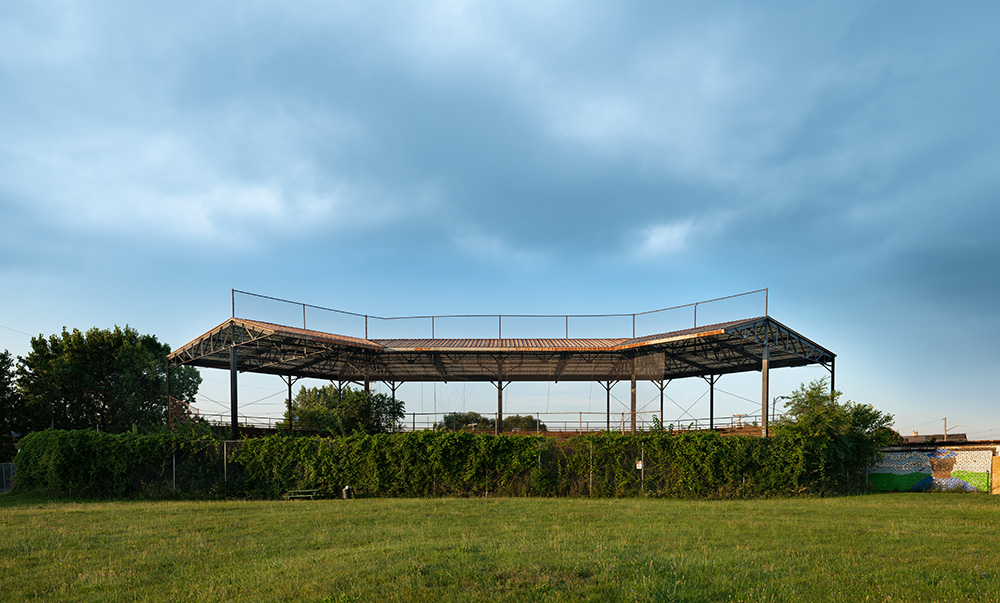
©Rich Frishman, Negro League Stadium; Hamtramck, Michigan 2018 2018 Built in 1930, Hamtramck Stadium was home to the Negro National League Detroit Stars in 1930-1931 and again in 1933. The field was also home to the Detroit Wolves of the Negro East-West League in 1932, and to the Negro American League Detroit Stars in 1937.
Ghosts of Segregation
All human landscape has cultural meaning. Because we rarely consider our constructions as evidence of our priorities, beliefs and desires, the testimony our landscape tells is perhaps more honest than anything we might intentionally present. Our built environment is society’s autobiography writ large.
Ghosts of Segregation photographically explores the vestiges of America’s racism as seen in the vernacular landscape, hidden in plain sight: Schools for “colored” children, theatre entrances and restrooms for “colored people,” lynching sites, juke joints, jails, hotels and bus stations. What is past is prologue.
We often take our daily environments for granted, but within even the most mundane edifice may lurk an important bit of history. If we are curious and diligent, we can read our surroundings like a book. That stairway apparently to nowhere once went somewhere. The curious palimpsest of bricks covers something. What purpose did they serve?
Segregation is as much current events as it is history. These ghosts haunt us because they are very much alive. While this project to date has focused on the Deep South, prejudice has no geographic boundaries. I have all of America to explore.
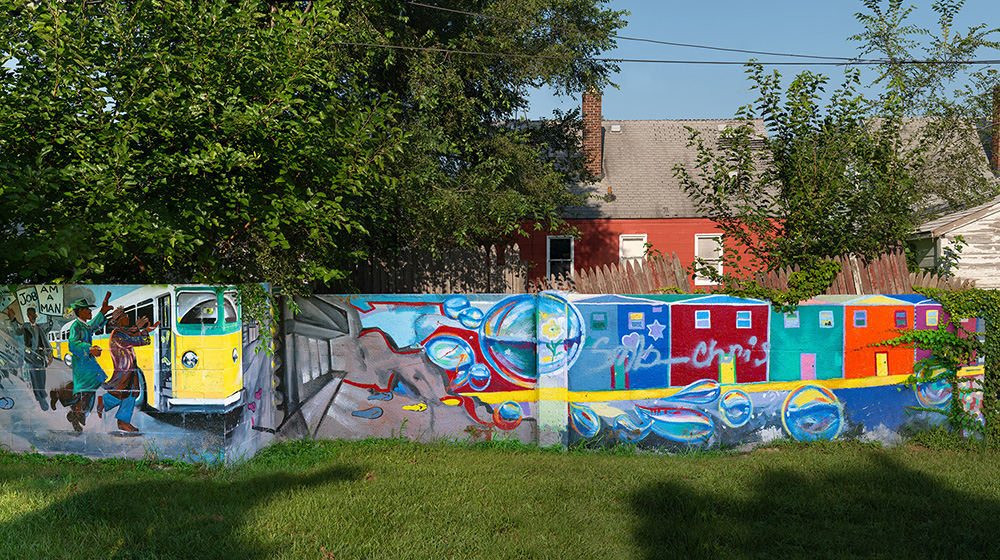
©Rich Frishman, 8 Mile Wall; Detroit, Michigan 2018 When the Federal Housing Administration (FHA) was founded in 1934, the process of “redlining,” the act of denying loans and financial services to black neighborhoods while granting them for white neighborhoods, was codified. The neighborhood of Wyoming was a redlined black neighborhood for nearly a decade until the early 1940s, when developers wanted to build a white development in the area. They were denied by the FHA because their plan placed the white neighborhood “too close” to the black neighborhood. Thinking quickly, the developers responded by building a half-mile long wall directly in between Mendota Street and Birwood Avenue for a full three blocks. This was enough to be given the nod of approval from the U.S. government. The wall was the official racial divider for over 20 years, until the Fair Housing Act abolished such racist policies in 1968.
Notes on Ghosts
History is all around us, hidden in plain sight. Even the most mundane edifice has a story. If we take the time and make the effort, we can learn to read the landscape like a book. In so doing, we might learn about ourselves and our world.
When I began my previous project exploring our cultural landscape, American Splendor, part of my impetus was to give vent to my sense of humor. I was more sanguine at the time. The Big Fish Supper Club is just too hilarious an example of mimetic architecture to go undocumented. American Gothic’s Nan Wood and Byron McKeeby (ala Seward Johnson) towering over car club enthusiasts at the Iowa State Fairgrounds overflows with cultural irony that I felt compelled to capture.
In the Fall of 2016 things changed. No longer did our American culture seem benign, let alone funny. From my left-of-liberal point of view, the dark forces that have always existed in our country now were dominant. My enthusiasm for documenting amusing aspects of Americana waned. I did not know what to do.
In fact, I had a clue. Shortly after the election, Malcolm Daniel called to tell me the Museum of Fine Art Houston wished to acquire a print of mine, “Segregation Wall; Gonzales, Texas 2016.” I had photographed this painful reminder of our cultural history as I wandered around Texas after FotoFest two years ago. I began researching other extant examples of American apartheid.
With just a few exceptions, most of what I uncovered did not resonate for me visually. Maybe I was just tuned into the wrong frequency. This went on for 18 months. Then, as I was researching routes for my 2018 post-FotoFest road trip, I stumbled upon a Mississippi historical preservation website. In particular, the writings of E.L. Malvaney (a pseudonym) were a treasure trove of ideas. Those nuggets have led me to a much broader vein of gold.
On that first road trip I spent 4 weeks driving around Texas, Louisiana, Mississippi and Alabama, photographing palimpsests that reveal the dark days of Jim Crow. The painful reality is that none of this is actually “past,” it is present. Segregation, racial oppression, and inequality are current events. I call this project “Ghosts of Segregation,” but these ghosts continue to haunt us because they are very much alive.
Since that initial trip through the Deep South just 12 months ago, I have documented numerous sites in the North, as well. Prejudice has no geographic boundaries; I have all of America to explore. – Rich Frishman
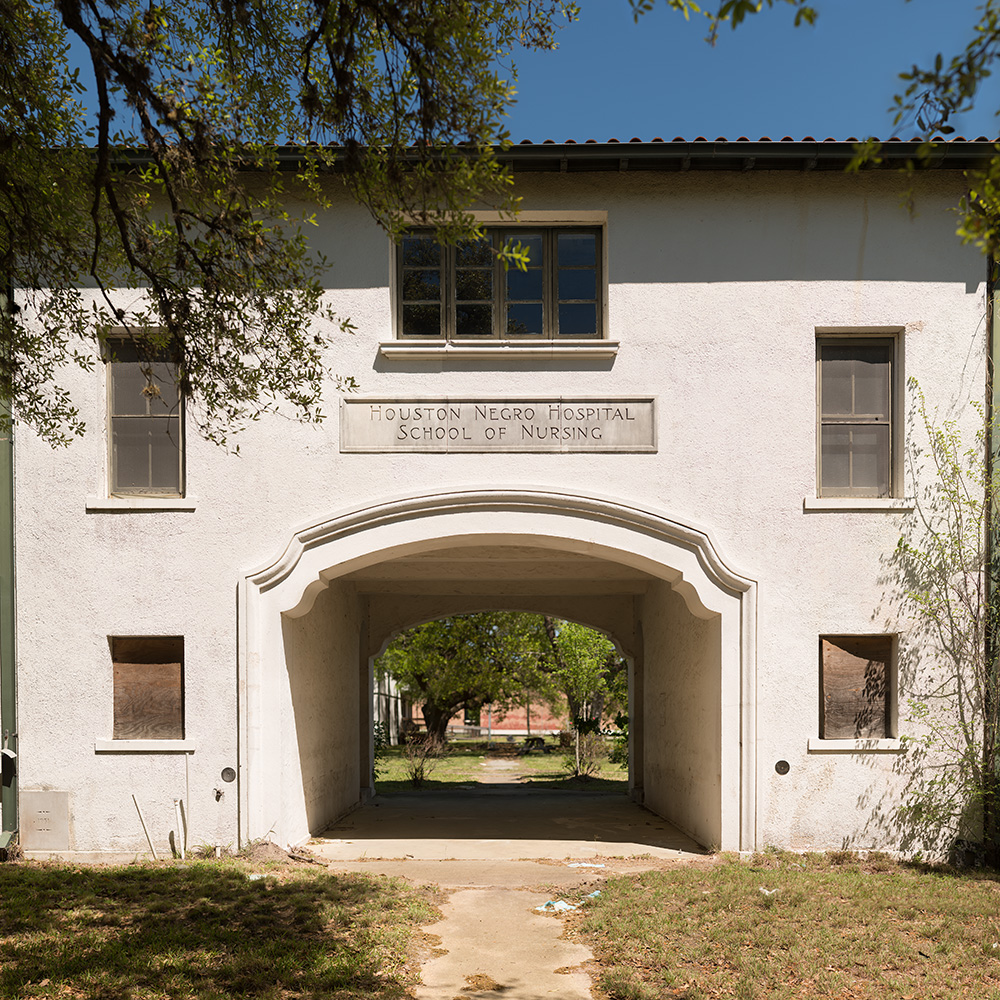
©Rich Frishman, Houston Negro Hospital School of Nursing; Houston, Texas 2018 Houston Negro Hospital School of Nursing, built in 1931, now stands abandoned along with the hospital with which it once was associated. The Houston Negro Hospital was created in 1926 when the earlier black Union-Jeramiah Hospital was no longer capable of accommodating the rapidly growing black population of Houston, Texas. African American community leaders began a campaign to garner support from local physicians when oilman Joseph Cullinan, who had earlier supported the existing hospital, donated $80,000 to construct a new facility. The city of Houston donated three acres of land in the Third Ward for the new fifty-bed hospital. Construction began in 1925. The hospital officially opened in July 1927 and became the first non-profit hospital for black patients in Houston. The hospital also provided work for black physicians who were not allowed to admit patients in the “black wards” of other Houston hospitals. The entire hospital staff was black as well, which was rare in the United States at that time. The hospital offered memberships to families for $6 a year, granting eligibility for all members for free hospital care. This prepaid system continued until 1938. The Houston Negro Hospital Nursing School was established in 1931 next to the hospital. This was the first educational institution created for the training of black nurses in Houston.
Rich Frishman’s photography is included in a wide range of private and institutional collections, including the New Orleans Museum of Art, Museum of Fine Arts Houston, the Smithsonian Institution and the Amon Carter Museum. His work has garnered dozens of prestigious awards, including the PhotoNOLA Review Prize (2019), two Sony World Photography Awards (2018), Communication Arts Photography Award (2018), Photo District News Photo Annual (2018), Michael H. Kellicutt Award (2013), International Photo Annual Award (2013), and Critical Mass finalist (2012, 2015). He was nominated for a Pulitzer Prize in 1983. Gallery shows include Clark Gallery (Boston USA), Berlanga Fine Arts (Chicago USA), Minneapolis Photo Center (Minneapolis USA), and Sol Mednick Gallery (Philadelphia USA).
Born and raised in Chicago, Frishman began making photographs at age 5, when he was given a Kodak Brownie for his birthday. That simple gift sparked a lifetime passion. Photography became a language with which to explore and explain life.
Frishman specializes in magnificently detailed immersive large-format prints, constructed of hundreds of individual photographs that he meticulously blends together to create a single image. His current project, “American Splendor,” explores the cultural landscape of the United States. These authentic scenes reflect Frishman’s background in photojournalism and his interest in history. Often there is a measure of irony, humor, or pathos in his choice of subject matter, but he primarily considers himself a visual archaeologist, documenting the future remains of a lost civilization.
Frishman lives with his family on an island outside Seattle, Washington.
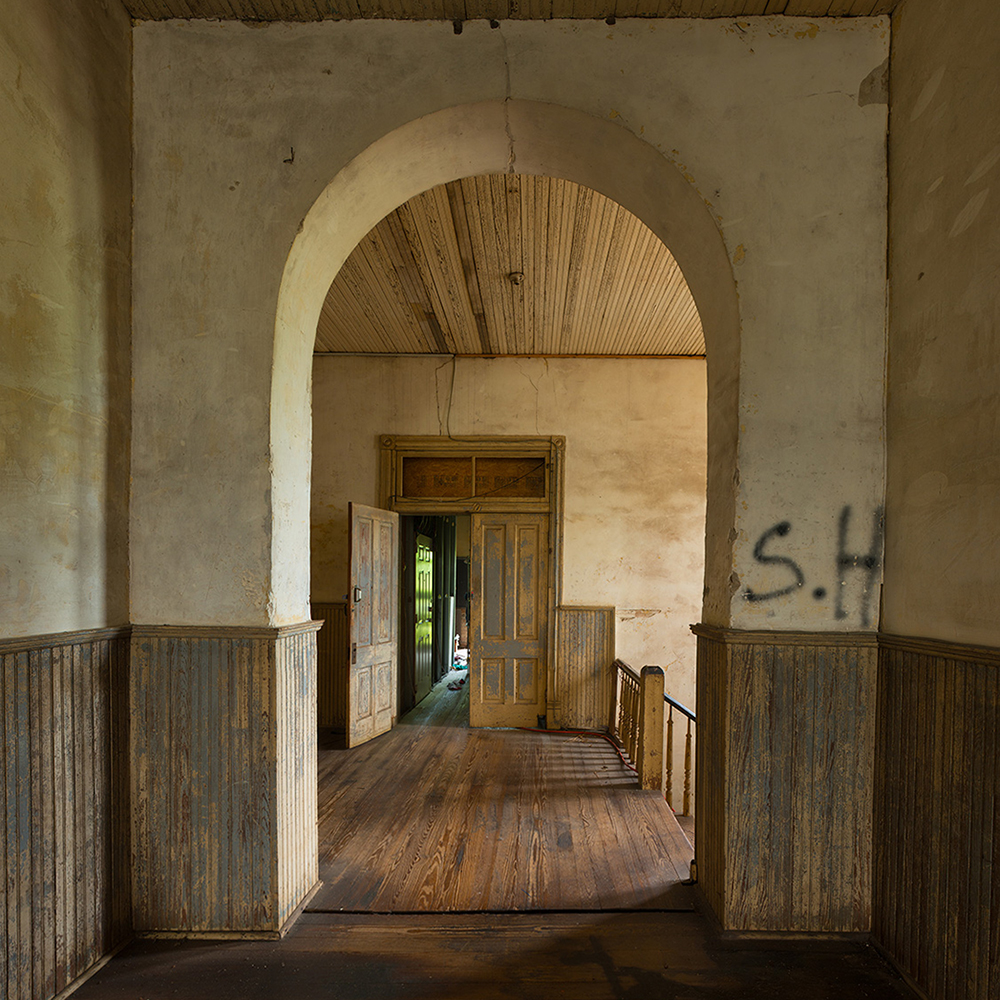
©Rich Frishman, Entrance to Room #10 Victoria Colored School; Victoria, Texas 2018 The Victoria Colored School was built in an area of Victoria that had been settled by freedmen after the Civil WarThe building was next door to the Freedman School (built in 1868 by the which was turned into a dormitory for teachers of The Colored School. Slavery had been illegal in Texas under Mexican rule but, in 1836, with the establishment of the Republic of Texas slavery was legalized. For the first time, cotton farming in the Victoria area was profitable. The flat, fertile, well-watered, “empty” ranch lands throughout Texas interested cotton growers in the southeast. They began immigrating to Victoria,buying land and bringing slaves with them to work the fields. Twenty-five years after the legalization of slavery, at the outbreak of the Civil War, slaves equaled more than half of Victoria County’s population. The influx of Southerners had surpassed the influx of the strict-abolitionist German immigrants and Victoria County voted overwhelmingly for the succession of Texas. The war eventually destroyed the market for cotton. Former slaves either became sharecroppers or drifted into the city, establishing a community and social infrastructure. After the war, area leaders wanted to establish schools for African Americans that would channel them into vocational training for the kind of workforce area businesses demanded. Children in grades one to seven attended free, but citizen resistance to free education resulted in students in grades 8 through 10 paying a fee until 1906.

©Rich Frishman, Temple Theatre Colored Entrance; Meridian, Mississippi 2018 During the Jim Crow era “colored people” were forced to enter the Hamasa Shrine Temple Theater in Meridian, Mississippi by walking down an alley to a separate colored entrance and colored ticket booth. More elaborate than many other theatres, the magnificent Temple actually had an awning over its segregated entrance.
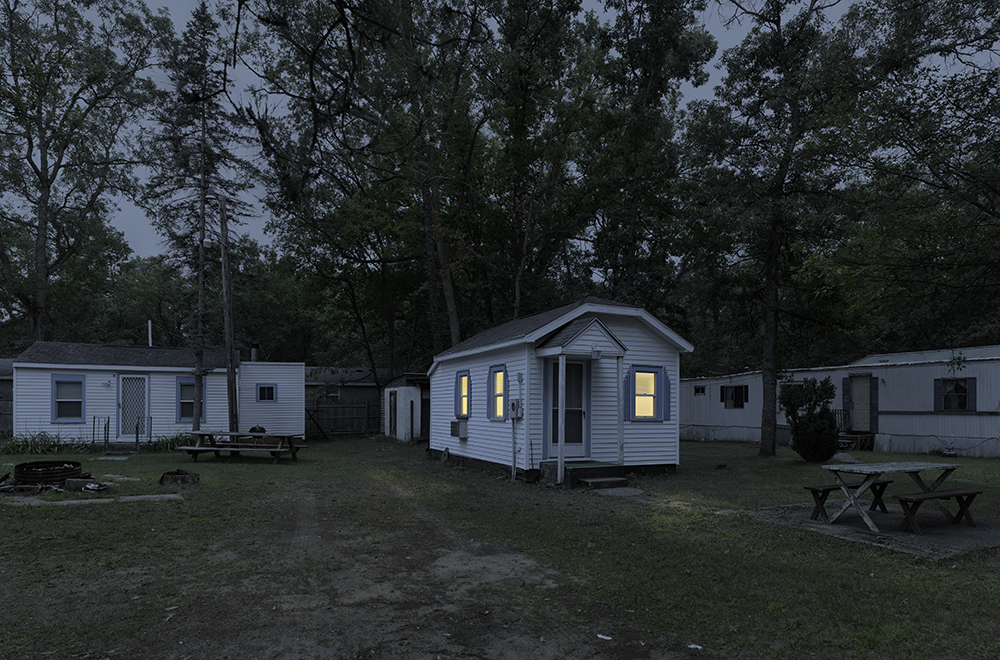
©RIch Frishman, The Black Eden; Idlewild, Michigan 2018 The small resort town of Idlewild, Michigan was known as the Black Eden, and at its height in the 1950s and ‘60s, more than 25,000 African Americans would travel from Chicago, Detroit, Cleveland, and Indianapolis each summer to visit its 2,700 acres of lakes and western Michigan wilderness for intellectual stimulation, partying, and a sense of community. Founded in 1912 by four white couples who saw the need for resorts for the growing African American middle and upper middle class, Idlewild became a place for intellectual and political interaction among prominent members of the 1920s African American community, including William Pickens and W.E.B. Du Bois. “If you were a doctor, a lawyer, an entrepreneur, an educator, and you had the income to travel either by train or auto, it was a place that you wanted to be,” says Dr. Ronald Stephens, a professor of 20th-century African American history and culture at Ohio University and author of Idlewild: The Rise, Decline and Rebirth of a Unique African-American Resort Town. “The idea of having that sense of community, independence, and ownership was a really big deal in black America.” But the increasingly rapid growth of the working black middle class after World War II, particularly with the rise of the auto industry in the Midwest, created a shift in the culture of Idlewild. “By the 1950s and ’60s, the crowd that was coming up to Idlewild, though they were educated, had a different idea of vacation,” says Stephens. “They were going up there to have fun and party.”
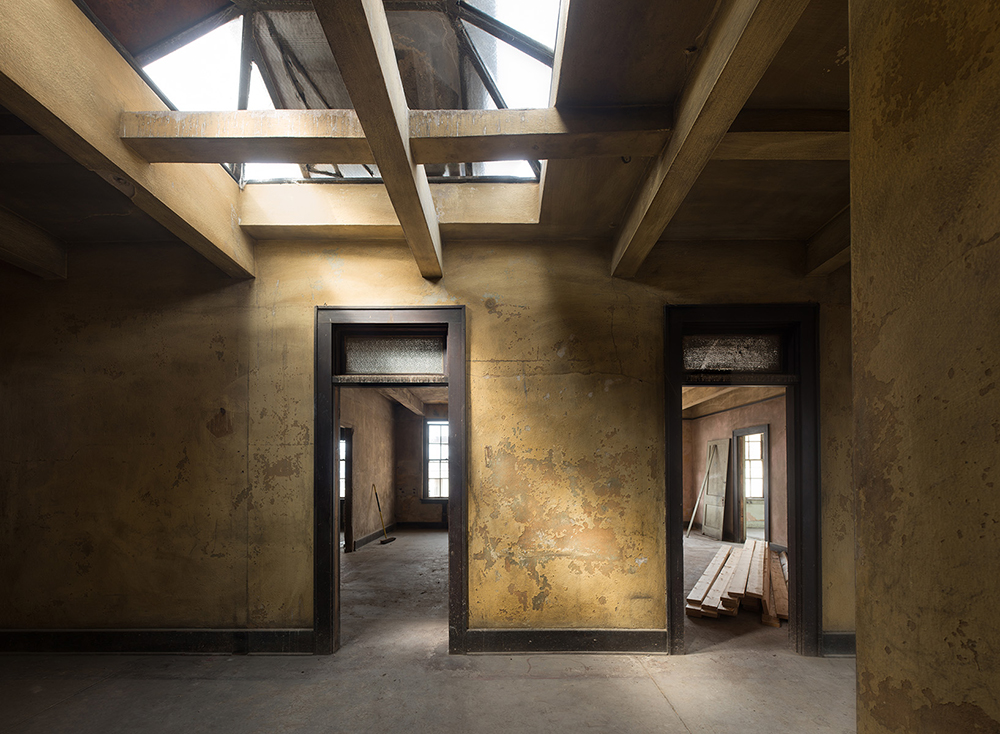
©Rich Frishman, : Railroad Hotel; Clarksdale, Mississippi 2018 In the 1920s, The Travelers was a bare-bones 13-room, second-story hotel that accommodated colored railroad workers. It is located at 212 Third Street, in an area of Clarksdale once referred to as “The New World,” the belly of the blues and red light district. It was commonly referred to as a “railroad hotel” because its guests were mostly rail workers. As of March 2018 it was undergoing restoration to become a boutique hotel. title: Remains of E.H. Henry Rosenwald School; Eagle Lake, Texas 2018 During the dark days of Jim Crow, many Southern communities had no schools for children of color. These children would receive their education, if they were lucky, at home or in a church. Philanthropist Julius Rosenwald, president and part-owner of Sears Roebuck and Company, in collaboration with Booker T. Washington, created a charitable foundation in 1917 to help African American communities build schools for their children. They required local communities to raise matching funds to encourage their commitment to these projects. The collaboration of Rosenwald and Washington led to the construction of almost 5,000 schools for black children in the eleven states of the former Confederacy as well as Oklahoma, Missouri, Kentucky, and Maryland. As a result of their collaboration, approximately one-third of African American children were educated in these schools. Only approximately 100 buildings remain (2019), almost all either repurposed or in decay. Days before I arrived to document this school it was demolished.

©Rich Fishman, Remains of E.H. Henry Rosenwald School; Eagle Lake, Texas 2018 During the dark days of Jim Crow, many Southern communities had no schools for children of color. These children would receive their education, if they were lucky, at home or in a church. Philanthropist Julius Rosenwald, president and part-owner of Sears Roebuck and Company, in collaboration with Booker T. Washington, created a charitable foundation in 1917 to help African American communities build schools for their children. They required local communities to raise matching funds to encourage their commitment to these projects. The collaboration of Rosenwald and Washington led to the construction of almost 5,000 schools for black children in the eleven states of the former Confederacy as well as Oklahoma, Missouri, Kentucky, and Maryland. As a result of their collaboration, approximately one-third of African American children were educated in these schools. Only approximately 100 buildings remain (2019), almost all either repurposed or in decay. Days before I arrived to document this school it was demolished.

©Rich Frishman, E.F. YOUNG HOTEL; Meridian, Mississippi 2018 E. F. Young Jr.’s hotel was one of two listings of accommodations for black travelers in Mississippi under the years of segregation and Jim Crow laws, listed in Victor Green’s travel guide, The Green Book. E. F. Young Jr. was born in 1898 the son of a farmer and eventually became one of the wealthiest African American businessmen in the Southeast. He started as a barber as a young man, experience he used to formulate his own hair care products. On February 14, 1933, he registered the E. F. Young Jr. Manufacturing Company – the first ethnic hair care product manufacturer in the United States – with the U.S. Patent Office. It quickly became one of the largest African-American owned companies in the South. In 1946, Young realized his final goal in the establishment of his commercial empire. That year he opened his own barber and beauty shop, as well as the first and only Meridian hotel to serve African Americans. He called his new establishment the E. F. Young Jr. Hotel. Young had long been involved in the struggle for Civil Rights in Meridian. During the 1940s, he served as the Vice President of Meridian’s Chapter of the NAACP. By 1942, Young had helped recruit nearly one hundred dues paying members. Even after E. F. Young Jr. died in 1950, his business establishments continued to serve Meridian’s African American community. Following Young’s death in 1950, family members continued to operate his various businesses. In 1953, his wife and three children renewed his patent for E. F. Young Manufacturing Co. Through the 1960s, the E. F. Young Jr. Hotel remained the only Meridian hotel to serve black patrons, and in a 1962 issue of Ebony Magazine, Young’s hotel was the only lodging listed in the state of Mississippi. As one of the only African-American hotels in the state, the E. F. Young Jr. Hotel welcomed a long list of distinguished guests, including Leontyne Price, Ella Fitzgerald, the Harlem Globetrotters, and Martin Luther King, Jr. The E. F. Young Jr. hotel remained in operation until 1978, when the building was rented to office tenants. In recent years it has lain entirely vacant.
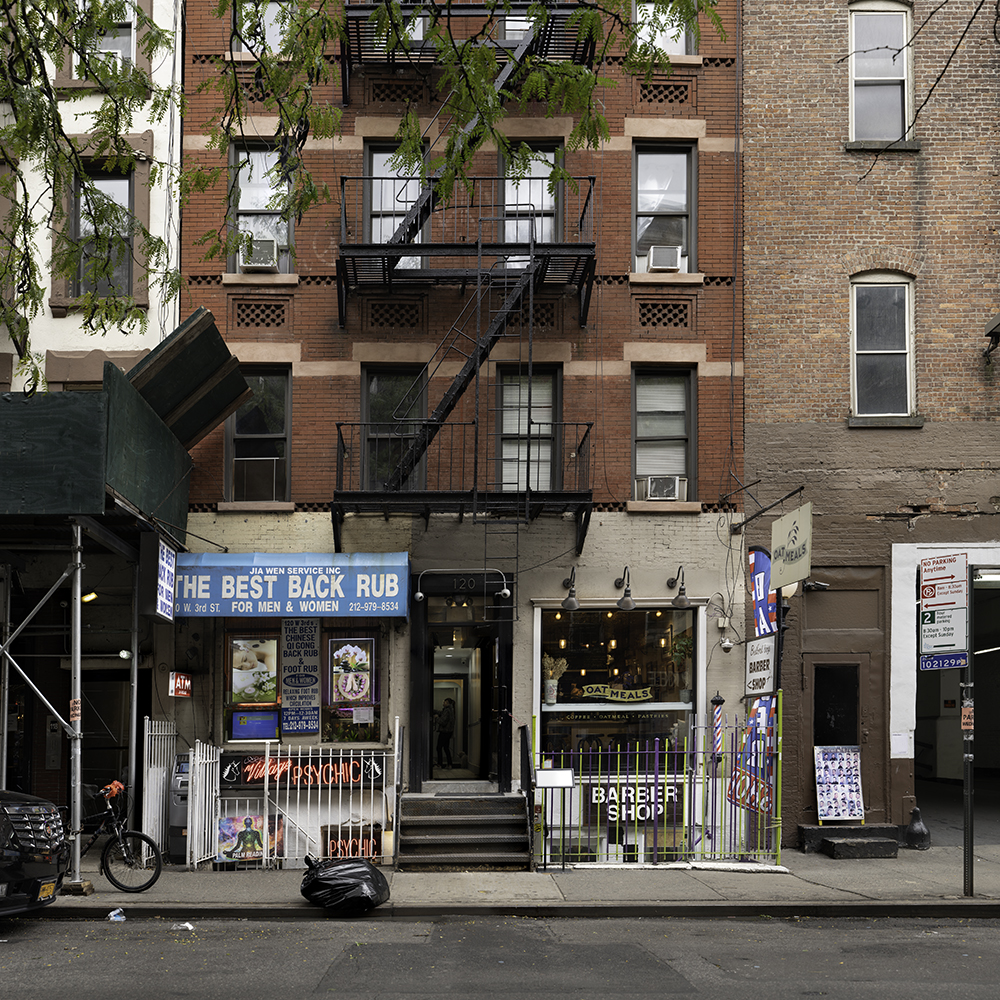
©Rich Frishman, AFRICAN FREE SCHOOL; New York City 2018 The African Free School was founded on November 2, 1787 in Lower Manhattan by the New-York Manumission Society and founding fathers Alexander Hamilton and John Jay. It was the very first school for blacks in America. Ultimately consisting of seven schools, the system’s third school was located in Greenwich Village, at 120 west 3rd Street, then known as Amity Street. The mission of the institution was to empower young black people and educate them for something other than slavery, which was a complicated and bold proposition for the time. In 1785 the Society worked to pass a New York State law prohibiting the sale of slaves imported into the state. This preceded the national law prohibiting slave trade, passed in 1808. The 1783 New York law also lessened restrictions on the manumission of enslaved Africans. In New York, a gradual emancipation law was passed in 1799, which provided that children of enslaved mothers would be born free. However, long periods of indentured servitude were required; 28 years for men and 25 for women. Existing slaves were eventually freed, until the last were freed in 1827.
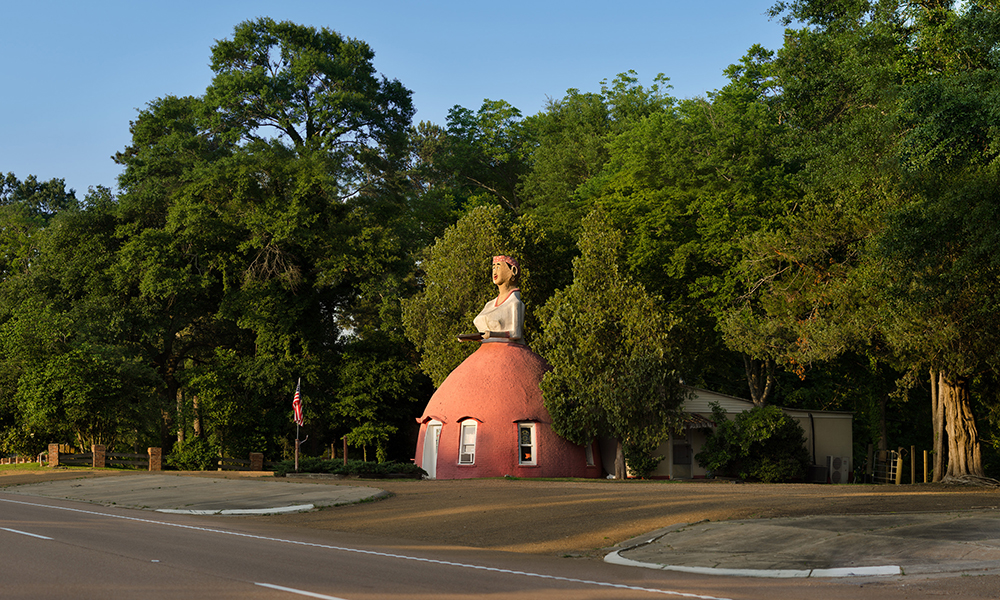
©Rich Frishman, Mammy’s Cupboard; Natchez, Mississippi Natchez businessman Henry Gaude built Mammy’s Cupboard in 1939 to attract visitors headed to the Natchez Pilgrimage, an elaborate tour of plantation homes that began in 1932. The twenty-eight-foot high building was constructed in the shape of a slave woman with hoop skirt—a mammy figure. She originally had earrings made from horseshoes and a serving tray in her hands, with white hair and a red head scarf that suggested maturity and modesty. The figure’s exaggerated black color, white circles under the eyes, and bright red rouge drew from minstrel makeup conventions and from standard racist imagery of blacks at the time.
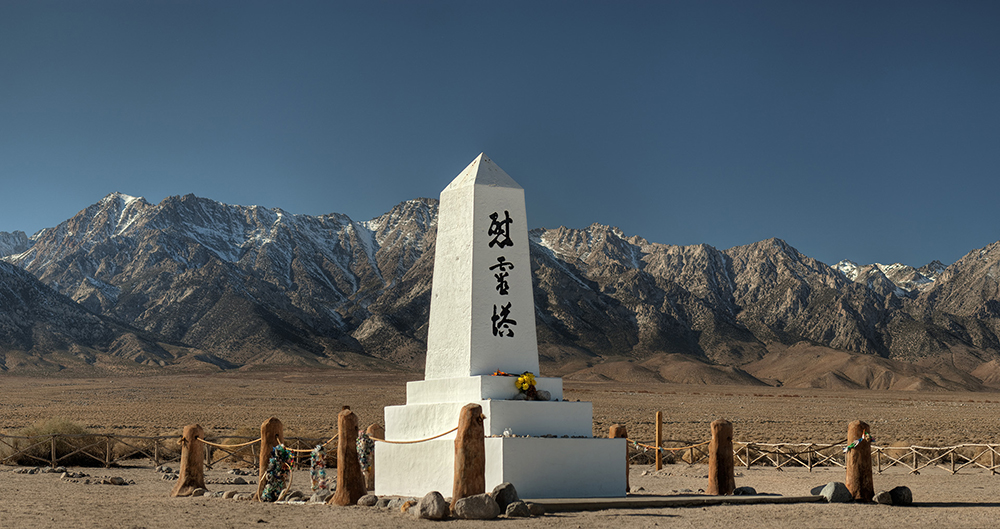
©Rich Frishman, Monument to the Dead; Manzanar, California 2018 Manzanar is most widely known as the site of one of ten American concentration camps where over 110,000 Japanese Americans were unjustly incarcerated during World War II from December 1942 to 1945. Located at the foot of the Sierra Nevada in California’s Owens Valley between the towns of Lone Pine to the south and Independence to the north, it is approximately 230 miles (370 km) north of Los Angeles. Over 135 Japanese internees died during their incarceration at Manzanar. Their ashes were buried in this small cemetery outside the barbed wire perimeter. In 1943 some of the Japanese prisoners built this obelisk. The inscription translates as “Monument to comfort the souls of the dead.” The famous white obelisk, the Soul Consoling Tower, is the only remaining original structure from the Manzanar concentration camp and the cemetery it marks is where the annual Manzanar Pilgrimage is held each year on the last Saturday in April.
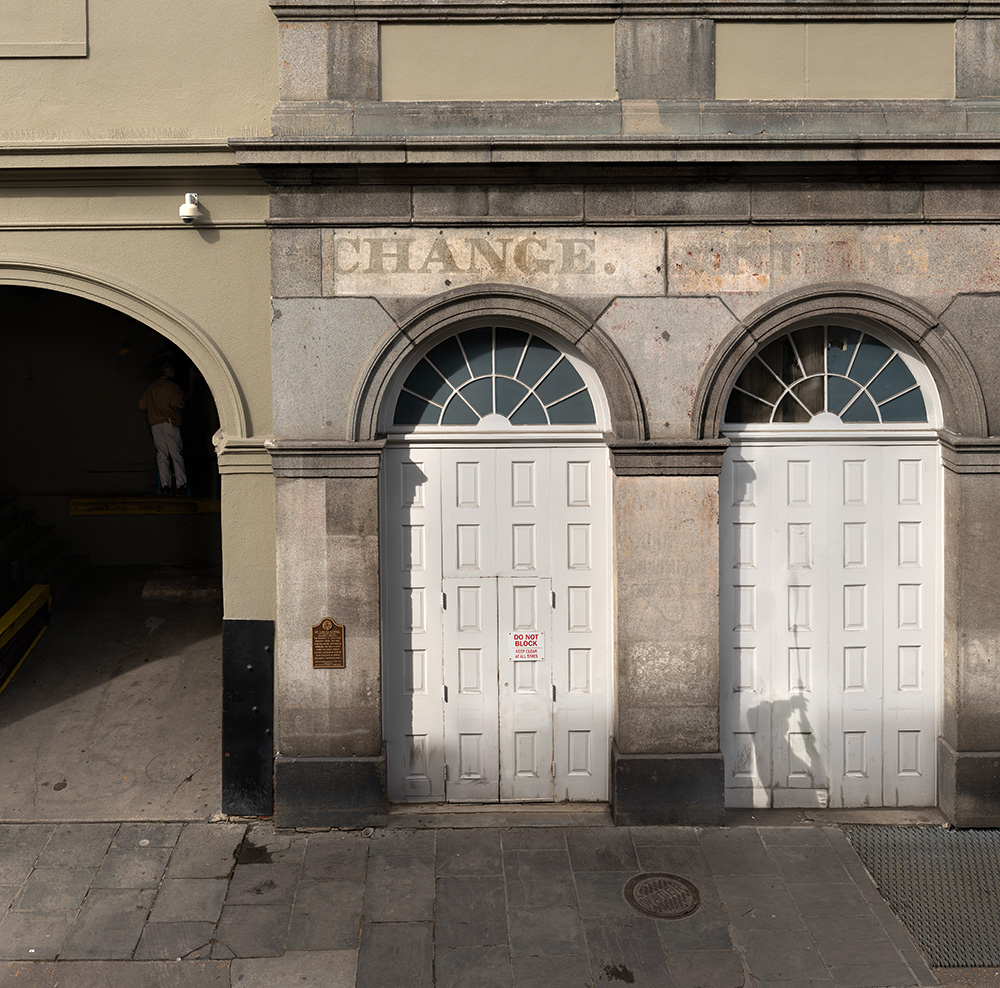
©Rich Frishman, Slave Exchange; New Orleans, Louisiana 2018 The enigmatic inscription “change,” floating above Chartres Street in New Orleans’ French Quarter, is often unnoticed. It is the vestige of the sign over the St. Louis Hotel Slave Exchange. The luxurious hotel included a bank, ballroom, shopping arcade and trading exchange. Six days each week from 1838-1862, under the hotel’s domed rotunda, auctioneers sold off land and goods as well as thousands of enslaved people.
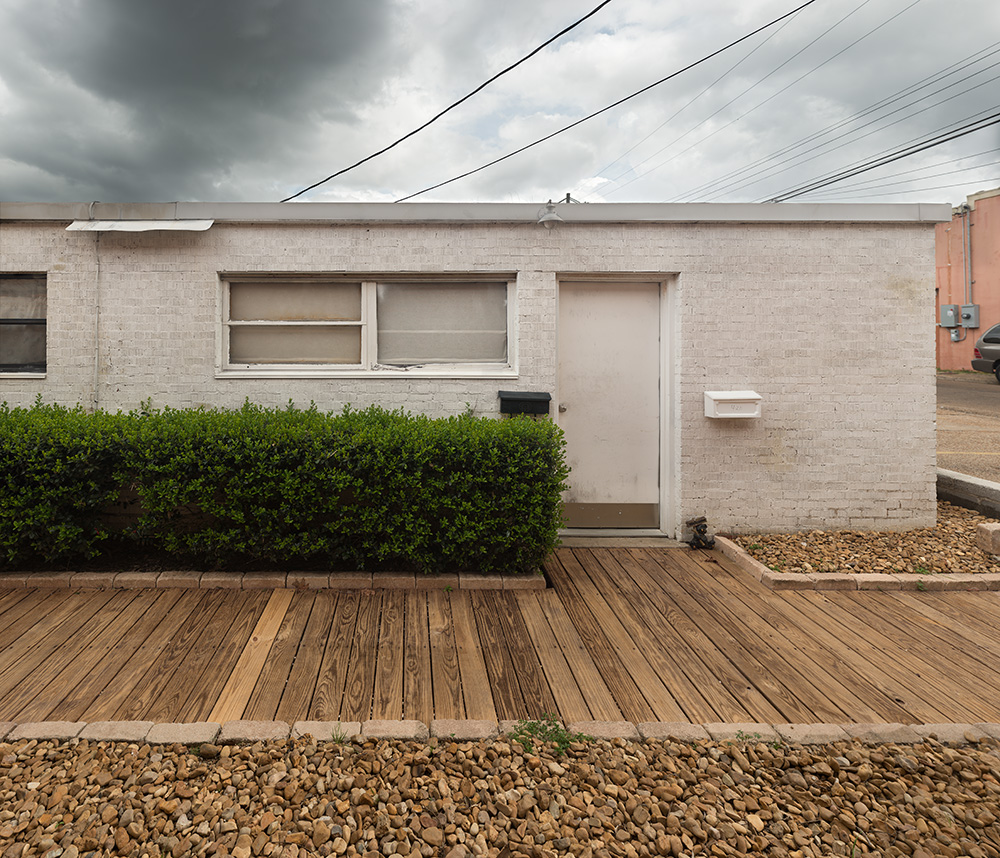
©Rich Frishman, Neshoba County Jail; Philadelphia, Mississippi 2018 During the Freedom Summer of 1964 three civil rights activists were jailed briefly in this small Neshoba County jail on trumped up charges. When Mickey Shwerner, Andrew Goodman and James Chaney were released that night, they were followed by Ku Klux Klan members tipped off by the sheriff’s office. They were forced off the road en route to their office in Meridian, taken to a remote backroads location and murdered
Posts on Lenscratch may not be reproduced without the permission of the Lenscratch staff and the photographer.
Recommended
-
Arnold Newman Prize: C. Rose Smith: Scenes of Self: Redressing PatriarchyNovember 24th, 2025
-
Celebrating 20 Years of Critical Mass: Cathy Cone (2023) and Takeisha Jefferson (2024)October 1st, 2025
-
Celebrating 20 Years of Critical Mass: George Nobechi (2021) and Ingrid Weyland (2022)September 30th, 2025
-
Celebrating 20 Years of Critical Mass: Amy Friend (2019) and Andrew Feiler (2020)September 29th, 2025
-
Celebrating 20 Years of Critical Mass: Jennifer McClure (2017) and JP Terlizzi (2018)September 28th, 2025


